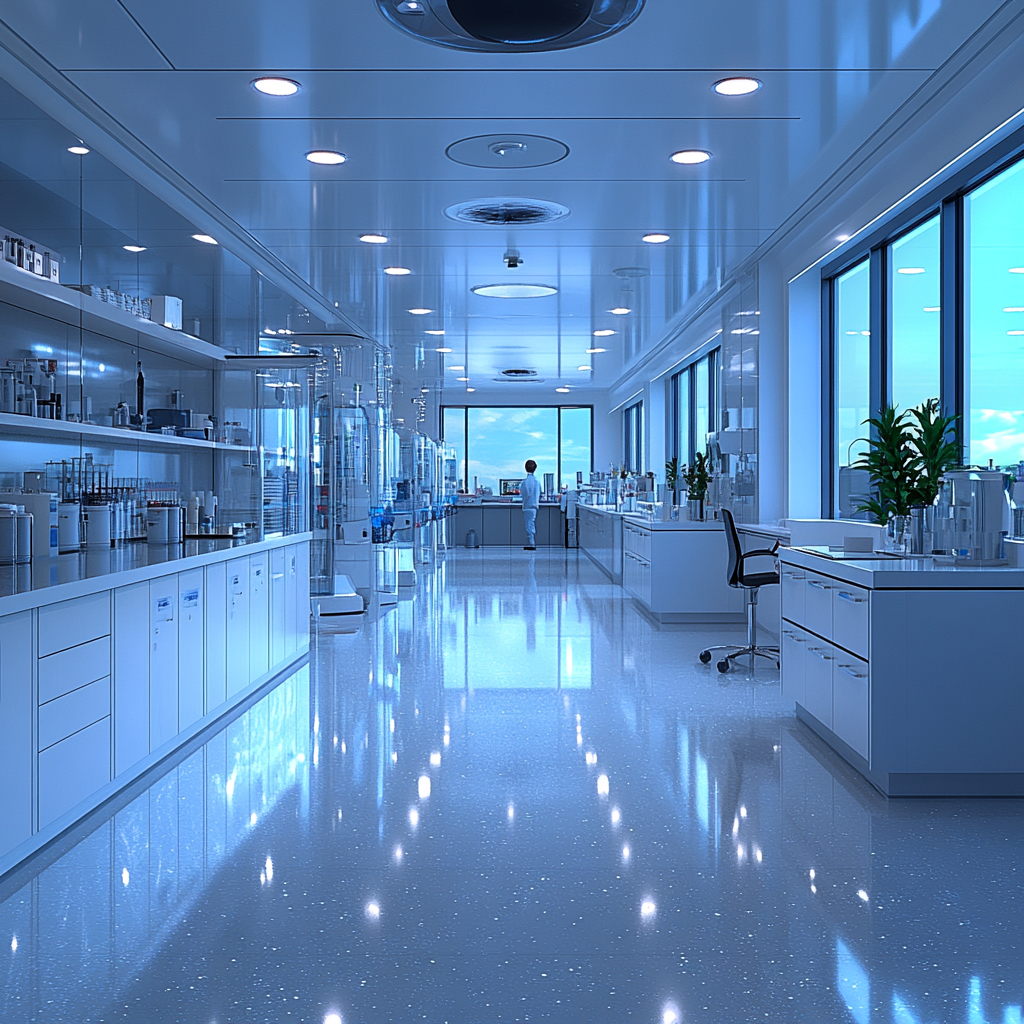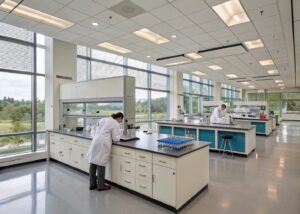Table of Contents
In the world of scientific research, light is both a powerful tool and a potential hazard. Many laboratories rely on intense light sources, particularly ultraviolet (UV) light, for various applications. However, this same light can wreak havoc on standard lab furniture, leading to degradation, discoloration, and potential safety hazards. Enter UV-resistant lab furniture – a game-changing solution for light-intensive environments.
The Need for UV Protection in Modern Labs
Labs Requiring UV-Resistant Furniture
Biotechnology Labs: Where UV light is used for sterilization and DNA analysis.
Forensic Laboratories: Utilizing UV light for evidence examination and fingerprint detection.
Photolithography Facilities: In semiconductor manufacturing, where UV light is crucial for etching processes.
Pharmaceutical Research Labs: For drug stability testing under various light conditions.
Environmental Testing Labs: Where UV exposure simulates weathering effects on materials.
These specialized environments demand furniture that can withstand constant UV exposure without compromising functionality or safety.
Cutting-Edge Materials and Coatings
UV-protected lab surfaces are at the forefront of materials science. Here’s what’s making waves in the industry:
Advanced Polymer Composites
- UV-Stabilized Resins: Incorporating UV absorbers directly into the material matrix.
- Nanoparticle-Enhanced Surfaces: Utilizing titanium dioxide or zinc oxide nanoparticles for superior UV resistance.
High-Performance Coatings
- Fluoropolymer Coatings: Offering excellent UV resistance and chemical inertness.
- Ceramic-Based Finishes: Providing a durable, UV-resistant barrier without off-gassing.
Engineered Wood Products
- UV-Cured Finishes: Offering enhanced durability compared to traditional varnishes.
- Melamine-Faced Boards: With added UV inhibitors for improved light resistance.
Maintaining Longevity Under UV Exposure
Investing in UV-resistant lab furniture is just the first step. Proper maintenance is crucial for ensuring long-term performance:
Regular Inspection: Check for any signs of degradation, especially in high-exposure areas.
Cleaning Protocols: Use UV-safe cleaning agents that won’t interact negatively with protective coatings.
Strategic Placement: Arrange furniture to minimize direct UV exposure where possible.
Protective Filters: Consider applying UV-filtering films on windows or light fixtures for added protection.
Periodic Reapplication: Some UV-resistant coatings may need reapplication every few years for optimal performance.
The Cost-Benefit Analysis of UV-Resistant Furniture
While UV-resistant lab furniture often comes with a higher upfront cost, the long-term benefits can lead to significant savings:
Reduced Replacement Frequency
- Standard furniture in high-UV environments may need replacement every 2-3 years.
- UV-resistant options can last 5-10 years or more, reducing replacement costs by up to 60%.
Minimized Downtime
- Less frequent furniture replacement means less disruption to lab operations.
- Estimated savings: 2-3 days of productivity per replacement cycle.
Enhanced Safety
- UV-degraded surfaces can harbor bacteria and compromise sterile environments.
- UV-resistant furniture maintains its integrity, supporting better lab hygiene and safety protocols.
Improved Experimental Consistency
- Stable surfaces ensure more consistent results, particularly in light-sensitive experiments.
- Potential to reduce error rates by up to 15% in photosensitive research areas.
Case Study: Biotech Breakthrough with UV-Resistant Upgrades
GeneTech Solutions, a leading biotechnology firm, recently overhauled their main research facility with UV-resistant lab furniture. The results were striking:
- 40% reduction in furniture replacement costs over a 5-year period
- 22% increase in successful light-sensitive experiments
- 30% decrease in surface contamination rates
By investing in UV-protected lab surfaces, GeneTech not only saved on long-term costs but also significantly improved their research outcomes.
Choosing the Right UV-Resistant Furniture
When selecting UV-resistant lab furniture, consider:
Intensity of UV Exposure: Match the protection level to your specific needs.
Chemical Compatibility: Ensure UV resistance doesn’t compromise chemical resistance.
Ergonomics: UV protection shouldn’t come at the cost of comfort or functionality.
Certification: Look for furniture tested to industry standards for UV resistance.
Warranty: A strong warranty can indicate manufacturer confidence in UV durability.
Conclusion: Illuminating the Future of Lab Design
As scientific research pushes boundaries, the demands on lab environments grow more complex. UV-resistant lab furniture isn’t just an upgrade – it’s a necessity for cutting-edge facilities. By investing in these specialized solutions, laboratories can ensure longevity, safety, and consistency in their light-intensive work.
The future of research is bright – make sure your lab furniture can keep up with the brilliance of scientific discovery.




